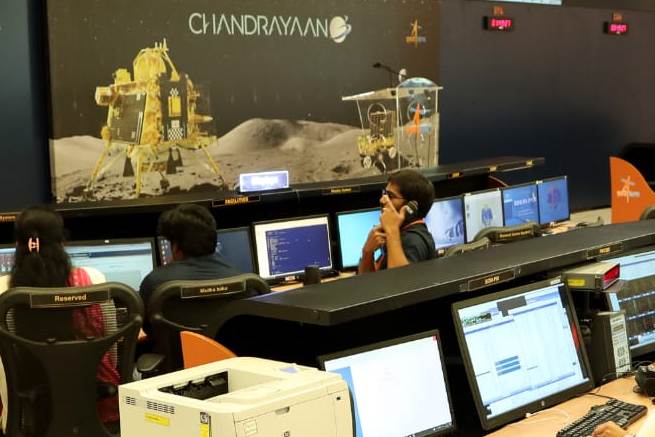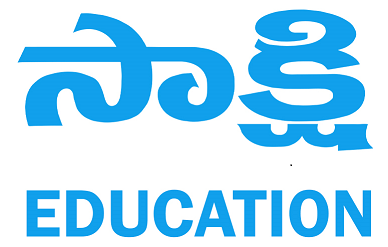Congratulations... Chandrayaan-3 has successfully soft-landed on the moon... Check its advantages!

ISRO has announced that Chandrayaan-3 has been successful. PM Modi congratulates ISRO on successful soft landing on moon.
Advantages of chandrayaan-3:
- It is India's third moon mission, after Chandrayaan-1 in 2008 and Chandrayaan-2 in 2019.
- Chandrayaan-3 will send India's first lander to the South Pole of the Moon.
- The south polar region of the Moon has more water ice than any other region. Chandrayaan 3 will help study the properties of lunar water ice, which is important for future human habitation on the moon.
- Chandrayaan 3 will help study the geology of the south polar region of the Moon. This helps us to learn more about the formation of the moon.
- Chandrayaan-3 will help study the properties of lunar water ice, which is important for future human habitation on the moon.
- Chandrayaan-3 will demonstrate India's technological capabilities on the Moon and help continue India's long-term lunar adventure.
Why is Chandrayaan-3 Important?
India's Moon Mission is important for a number of reasons. First, it is a major technological achievement that would put India in the league of the world's leading space powers. Second, it would help India to learn more about the moon, including its potential for resources such as water ice. Third, it would boost India's scientific and technological capabilities, which could have benefits for other sectors of the economy. Fourth, it would be a source of national pride and inspiration for Indians.
Here are some additional details about each of these reasons:
Technological achievement: Landing a spacecraft on the moon is a complex and challenging task. Only a handful of countries have ever done it, and India would be the fourth if Chandrayaan-3 is successful. This would be a major technological achievement for India and would demonstrate its growing capabilities in space exploration.
Scientific knowledge: The moon is a valuable source of scientific knowledge. It is thought to contain water ice, which could be a valuable resource for future human exploration of space. Chandrayaan-3 would help India to learn more about the moon's water ice and other resources.
Economic benefits: The development of space technologies can have benefits for other sectors of the economy. For example, the development of satellites for communication and navigation can also be used for commercial purposes. Chandrayaan-3 would help India to develop new space technologies, which could have benefits for the economy in the long term.
National pride: A successful Moon Mission would be a source of national pride for India and would inspire young people to pursue careers in science and technology. It would also help to boost India's image as a leading nation in the world.
What does Chandrayaan-3 Consist Of?
Lander payloads: Chandra’s Surface Thermophysical Experiment (ChaSTE) to measure the thermal conductivity and temperature; Instrument for Lunar Seismic Activity (ILSA) for measuring the seismicity around the landing site; Langmuir Probe (LP) to estimate the plasma density and its variations. A passive Laser Retroreflector Array from NASA is accommodated for lunar laser ranging studies.
Rover payloads: Alpha Particle X-ray Spectrometer (APXS) and Laser Induced Breakdown Spectroscope (LIBS) for deriving the elemental composition in the vicinity of landing site.
Chandrayaan-3 consists of an indigenous Lander module (LM), Propulsion module (PM) and a Rover with an objective of developing and demonstrating new technologies required for Inter planetary missions. The Lander will have the capability to soft land at a specified lunar site and deploy the Rover which will carry out in-situ chemical analysis of the lunar surface during the course of its mobility. The Lander and the Rover have scientific payloads to carry out experiments on the lunar surface. The main function of PM is to carry the LM from launch vehicle injection till final lunar 100 km circular polar orbit and separate the LM from PM. Apart from this, the Propulsion Module also has one scientific payload as a value addition which will be operated post separation of Lander Module. The launcher identified for Chandrayaan-3 is LVM3 M4 which will place the integrated module in an Elliptic Parking Orbit (EPO) of size ~170 x 36500 km.
.... and
— ISRO (@isro) August 22, 2023
The moon as captured by the
Lander Imager Camera 4
on August 20, 2023.#Chandrayaan_3 #Ch3 pic.twitter.com/yPejjLdOSS
ISRO has said that the Lander Module health is normal. The second deboosting operation of Lander is scheduled for the day after tomorrow on August 20th at around 0200 hrs. The de-boosting manoeuvre will continue till the Lander reaches closest to the Moon after which attempts will be made to soft-land on the surface of the Moon on August 23.
>> Download Current Affairs PDFs Here
Chandrayaan-3 Mission:
— ISRO (@isro) August 21, 2023
Here are the images of
Lunar far side area
captured by the
Lander Hazard Detection and Avoidance Camera (LHDAC).
This camera that assists in locating a safe landing area -- without boulders or deep trenches -- during the descent is developed by ISRO… pic.twitter.com/rwWhrNFhHB
Chandrayaan-3 is a follow-on mission to Chandrayaan-2 to demonstrate end-to-end capability in safe landing and roving on the lunar surface. It consists of Lander and Rover configuration. It will be launched by LVM3 from SDSC SHAR, Sriharikota.
The mission objectives of Chandrayaan-3 are:
- To demonstrate Safe and Soft Landing on Lunar Surface
- To demonstrate Rover roving on the moon and
- To conduct in-situ scientific experiments.
To achieve the mission objectives, several advanced technologies are present in Lander such as,
- Altimeters: Laser & RF based Altimeters
- Velocimeters: Laser Doppler Velocimeter & Lander Horizontal Velocity Camera
- Inertial Measurement: Laser Gyro based Inertial referencing and Accelerometer package
- Propulsion System: 800N Throttleable Liquid Engines, 58N attitude thrusters & Throttleable Engine Control Electronics
- Navigation, Guidance & Control (NGC): Powered Descent Trajectory design and associate software elements
- Hazard Detection and Avoidance: Lander Hazard Detection & Avoidance Camera and Processing Algorithm
- Landing Leg Mechanism.




















